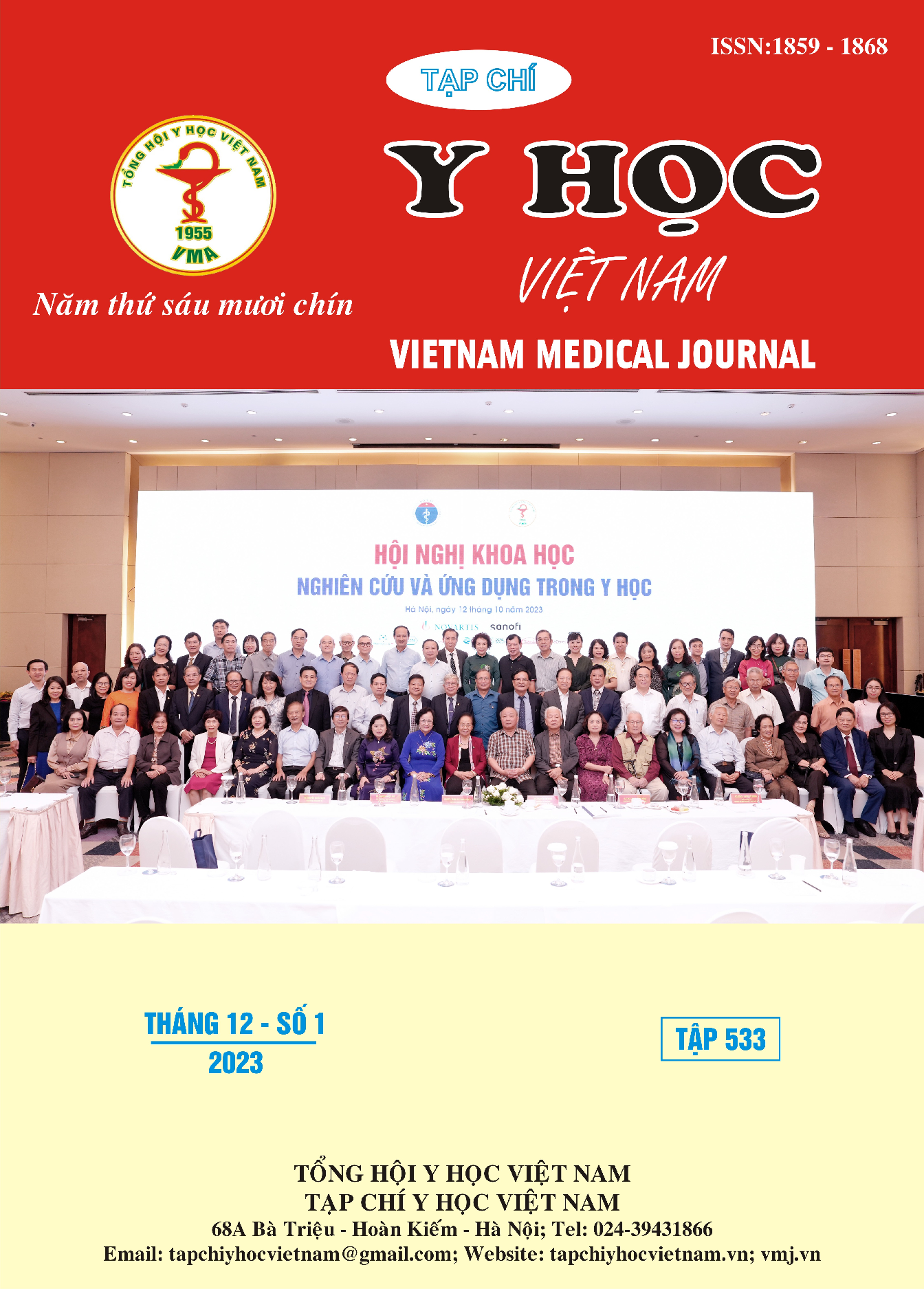COMPARISON OF THE 2021 (WITHOUT RACE ADJUSTMENT) AND 2009 CKD-EPI FOR ESTIMATED GLOMERULAR FILTRATION
Main Article Content
Abstract
Our goals were (1) To compare the 2021 and 2009 CKD-EPI equations, (2) To inspect the new equation on the stage of chronic kidney disease (CKD). Methods: a cross – sectional retrospective study. Results We had 537 participants (100 healthy medical students, 437 CKD patients. Median age of 30, 243 (45,3%) male. The median of 2021 CKD-EPI eGFRcr increased 0,22 (IQR 0,016-13,9) ml/min/1,73 m2 compared to the 2009 CKD-EPI one. The median of difference between 2 eGFRcr was 1,2% (IQR 0,02-39,4)%. In which, 52,6% cases had the 2021 CKD-EPI eGFRcr higher, 38.3% no change and 9,1% lower than the 2009 CKD-EPI eGFRcr. There was 127 (23,6%) cases change the CKD stage by using the new equation, in which, mainly 69 cases (12,8%) from G2 to G1. No case of the 2021 CKD-EPI eGFRcr changes to the more severe stage. The number of patients with eGFRcr <60ml/min/1.73 decreased 4.8% from 236/538 (43.9%) in the 2009 CKD-EPI equation to 210/537 (39,1%) patients in the new equation. Conclusions: The new equation of 2021 CKD-EPI, removed adjustment for race, increased the value of eGFRcr compared to the previous 2009 CKD-EPI, and influenced to the stage of CKD by increasing the number of G2 to G1 and decreased the number of patients with eGFR < 60ml/min/1.73
Article Details
References
2. Levey AS, Stevens LA, Schmid CH, zhang Y, Castro III AF, Feldman HI, Kusek JW, Eggers P, Lente FV, Greene T, Coresh J. for the CKD-EPI (2009) A new equation to estimate glomerular flitration rate. Ann Intern Med., 150, pp 604-612.
3. Inker LA, Titan S. Measurement and Estimation of GFR for Use in Clinical Practice: Core Curriculum 2021 (2021) Am J Kidney Dis. ; 78(5):736-749.
4. Inker LA, Eneanya ND, Coresh J, Tighiouart H, Wang D, Sang Y, Crews DC, Doria A, Estrella MM, Froissart M, Grams ME, Greene T, Grubb A, Gudnason V, Gutiérrez OM, Kalil R, Karger AB, Mauer M, Navis G, Nelson RG, Poggio ED, Rodby R, Rossing P, Rule AD, Selvin E, Seegmiller JC, Shlipak MG, Torres VE, Yang W, Ballew SH, Couture SJ, Powe NR, Levey AS; Chronic Kidney Disease Epidemiology Collaboration. New Creatinine- and Cystatin C-Based Equations to Estimate GFR without Race (2021). N Engl J Med.;385(19):1737-1749.
5. Delgado C, Baweja M, Crews DC, Eneanya ND, Gadegbeku CA, Inker LA, Mendu ML, Miller WG, Moxey-Mims MM, Roberts GV, St Peter WL, Warfield C, Powe NR. A Unifying Approach for GFR Estimation: Recommendations of the NKF-ASN Task Force on Reassessing the Inclusion of Race in Diagnosing Kidney Disease (2022). Am J Kidney Dis.;79(2):268-288.
6. Trần thị Bích Hương (2010), Ứng dụng eGFR trong thực hành lâm sàng đánh giá chức năng lọc cầu thận, Y học Tp Hồ Chí Minh, phụ bản 14 (2), tr 613-620
7. Kidney Disease: Improving Global Outcomes (KDIGO) CKD Work Group. KDIGO 2012 clinical practice guideline for the evaluation and management of chronic kidney disease (2013). Kidney Int Suppl; 3: 1–150.
8. Campillo CR, Sanz de Pedro MP, Barcelo SA, Bajo Rubio MA, Soto AB, Rioja RG. Differences in glomerular filtration rate estimated with the new eGFRcr CKD EPI age and sex 2021 vs. the eGFRcr CKD EPI 2009 formula (2022) . Adv Lab Med.;3(3):313-316


